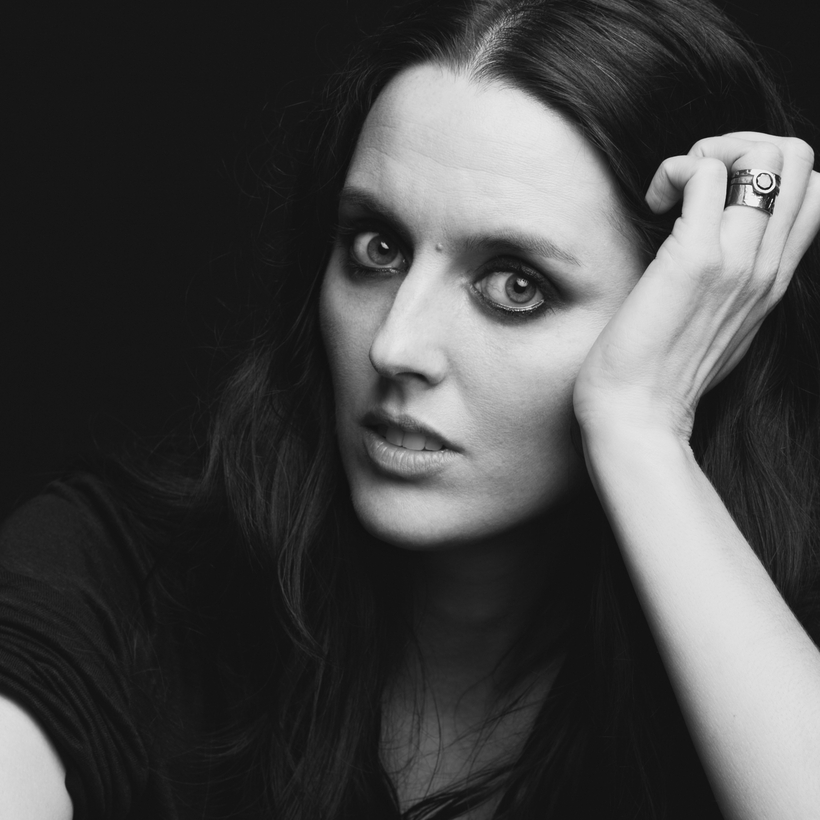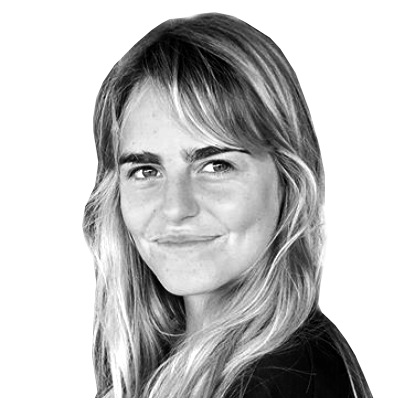For Elizabeth Neel, whose large, expressionistic paintings explore chaos and order, art runs in the family. Her brother, Andrew, is a filmmaker. And her grandmother was the artist Alice Neel, whose work is still the subject of major exhibitions nearly 40 years after her death, in 1984. (The Metropolitan Museum of Art just closed a monumental solo show that positioned Alice as one of the most radical female painters of the 20th century.)
Elizabeth, 46, grew up in Stowe, Vermont. “It was an idyllic, bohemian childhood,” she tells me. Elizabeth started painting at an early age, often with her grandmother. “She always loved children,” Elizabeth says. “Children represented on a psychological level a totally unmediated space. In some way she related to that. She related to the unmediated voice.” Though Elizabeth was just nine when Alice died, she remembers her well. “She was so smart and so funny. She was a person, not a grandmother.”

After Alice’s death, Elizabeth distanced herself from art. Growing up, she sensed the challenges Alice had faced—when Elizabeth was a child, her grandmother wasn’t the well-known artist she is today. “She only existed as a novelty act,” Elizabeth says. She came to regard a career in art as risky. “I saw my grandmother’s suffering at the hands of art,” she explains, “so I sort of veered away from art as a profession.”
In 1993, Elizabeth enrolled at Brown University, where she majored in history. But she soon realized that the historian’s life wasn’t for her—it felt too specific, too geared toward one facet of life. “I wanted to be able to engage in all different fields in one,” she says, “so I did what I thought was the hardest thing, which is paint, because nothing comes out of something if it isn’t hard.” She took a summer class at the School of the Museum of Fine Arts, in Boston, and studied there for three years, building up her art portfolio to eventually enroll in a master’s-of-fine-arts course.

It was during this time that Elizabeth began working on the large acrylic abstractions she is now becoming known for. She is as inspired by nature and its colors as she is by different forms—bodies, machines, buildings. Once her work’s physical boundaries have been set, Elizabeth goes back and integrates spontaneous movements. “I’m interested in the fluctuation between what can’t be controlled and what can,” she says. “That’s my relationship with the world in general.”
In 2002, Elizabeth moved to New York, where, in 2005, she enrolled in an M.F.A. program at Columbia University. Success came during that same year—she was approached and offered her first solo gallery show, and an exhibition of her work opened at Klemens Gasser & Tanja Grunert.

Since graduating from Columbia, in 2007, Elizabeth, who is married to the Irish D.J. Kevin Collins, has exhibited in Milan, Seoul, Shanghai, London, Prague, and Warsaw. Shows at Salon 94, in New York, and at Pilar Corrias, in London, have kept her busy this year.
Elizabeth spent lockdown in Vermont, and loved being able to stand still, go on walks, and absorb the landscape. “When I felt overwhelmed, I just went outside,” she says. But she is torn between a rural existence and city life. “New York has made me more interested in everything,” she says. “There are so many stimuli.” This struggle feels a lot like her artwork—a fight between the static and the fluctuating.
When asked about her future, Elizabeth is uncertain. “We never know in this crazy world,” she says. “I mean, we never have. But now everything is crazier than ever before.”
“Elizabeth Neel: Limb After Limb” is on at Pilar Corrias, in London, through October 23
Elena Clavarino is an Assistant Editor for Air Mail

